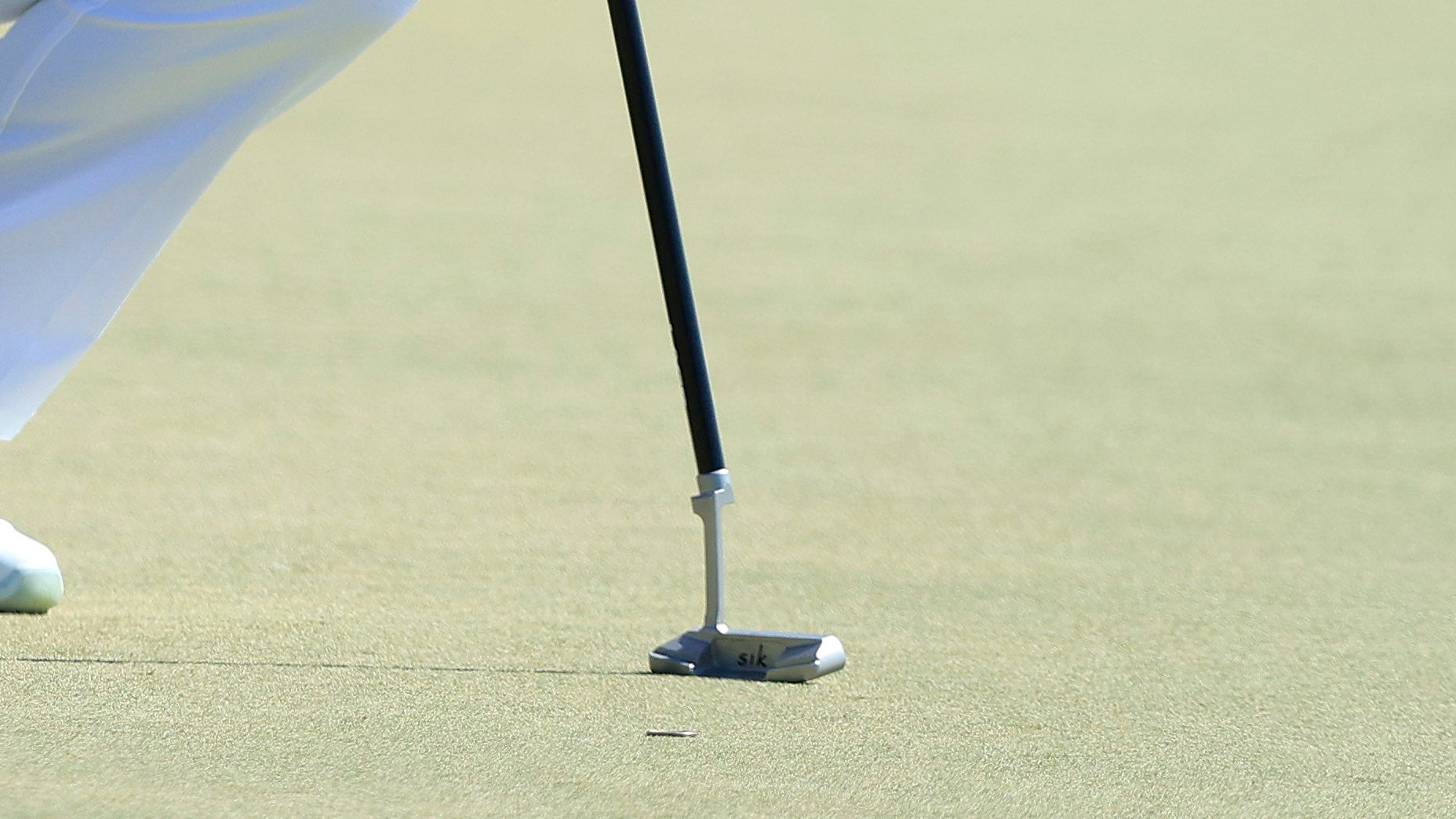Welcome to Fit Factor, a new GOLF.com series in which we’re shining a light on the importance of club fitting, powered by insights, data and other learnings from the experts at our 8AM Golf sister company, True Spec Golf.
Bryson DeChambeau’s recent putter change caught many by surprise. At first glance, the reigning U.S. Open champ’s Sik Pro C Armlock looked identical to the version he’d been using previously — with one exception.
Upon closer inspection, DeChambeau had the hosel lengthened ever-so-slightly to bring it closer to the centerline, which in turn reduced toe hang by 20 degrees. In DeChambeau’s case, the longer hosel offered a better feel at impact and a boost in the stability department.
Some recreational golfers might shrug at the idea of using a longer neck on their putter, but it’s worth taking a closer look at the type of player who might benefit from a less conventional putter setup.
“It’s so player-dependent upon how they release the putter through impact and what their visual perception is,” said Kris McCormick, True Spec Golf’s VP of Tour and Education, on GOLF’s Fully Equipped podcast. “The type of neck design is a compliment to the stroke type the player has going through impact. We’ve seen those plumber’s necks since Karsten. That neck design is the most copied neck design ever. It typically has a full shaft of offset and will help players with dynamic loft. It helps those who are more inside, square, inside stroke type.
“As far as the length of the neck, a lot of it comes down to how that player returns the club to square. Those hosel designs are all over the place with different shapes and sizes. What’s going to help you get the ball in the hole is the most important thing for me.”
A longer plumber’s neck is going to change the face-balancing of the putter, moving the center axis of the shaft closer to the center of the face. If you prefer a face-balanced putter, a longer neck could be a good option.
It’s also an ideal choice for those who tend to push putts (missing on the right for a right-handed golfer). Going longer can also make it easier to square the face up at impact, which in turn should improve directional consistency.
Another major winner who has enjoyed success on the greens with a longer neck is Collin Morikawa, who switched to a TaylorMade TP Juno with an extended stem and noticed an immediate improvement to his comfort level at address.
“It actually brought my hands a little more vertical, which is weird, but it brought them in a place that just feels comfortable,” Morikawa said of the putter change. “I don’t have to adjust anything. My putter’s already nice and flat to the ground.”
It should be noted that not every putter manufacturer offers a longer neck option, but they do exist. If you find yourself struggling with consistency but don’t want to bid adieu to a conventional plumber’s neck just yet, seek out a longer version and see if it doesn’t give you a boost on the greens.
Want to overhaul your own bag for 2021? Visit the expert fitters at our sister company, True Spec Golf. For more on the latest gear news, check out our latest Fully Equipped podcast below.
